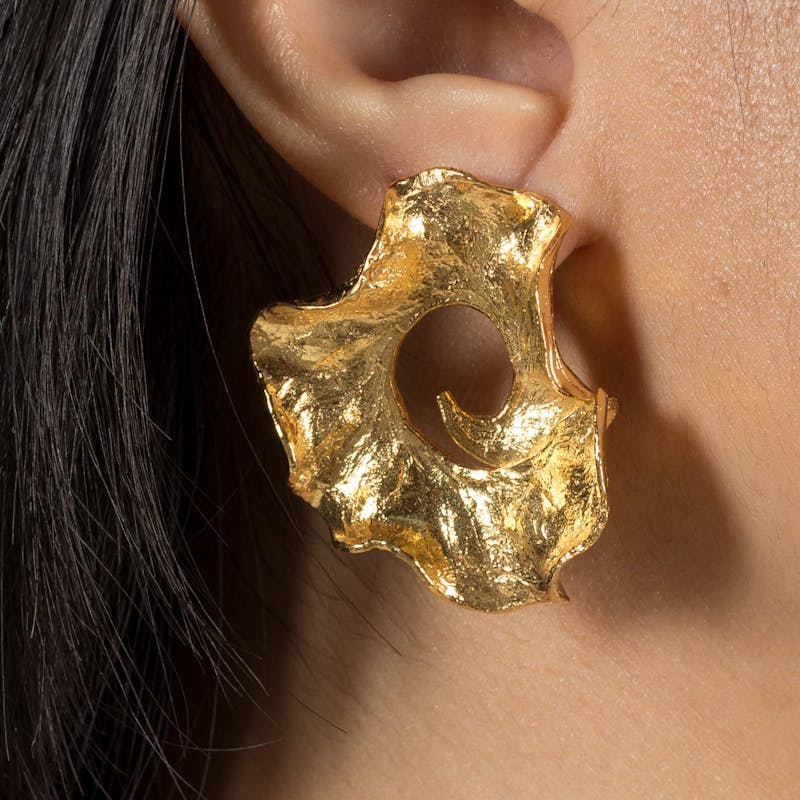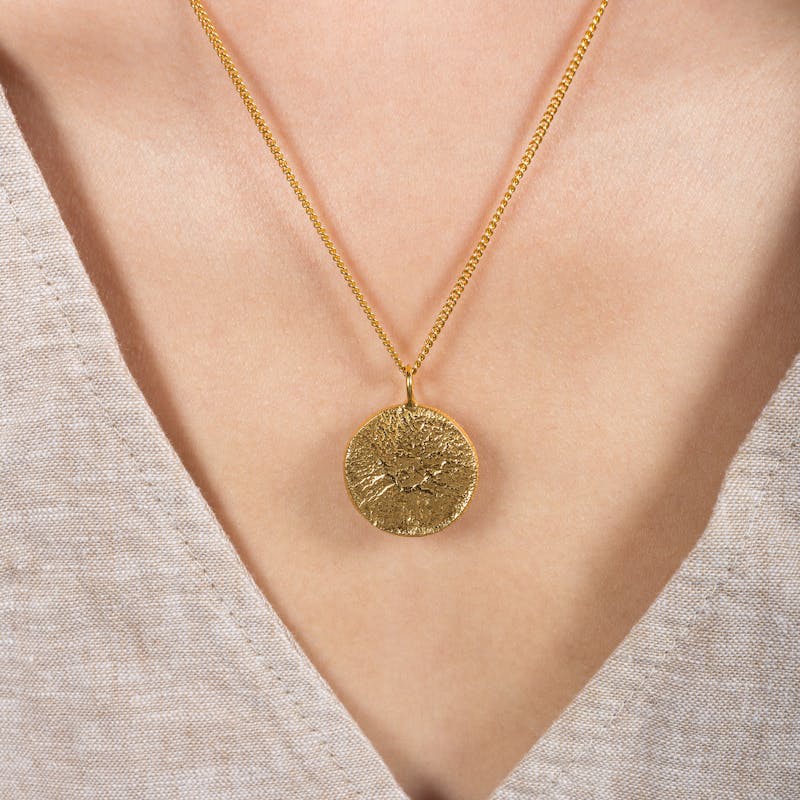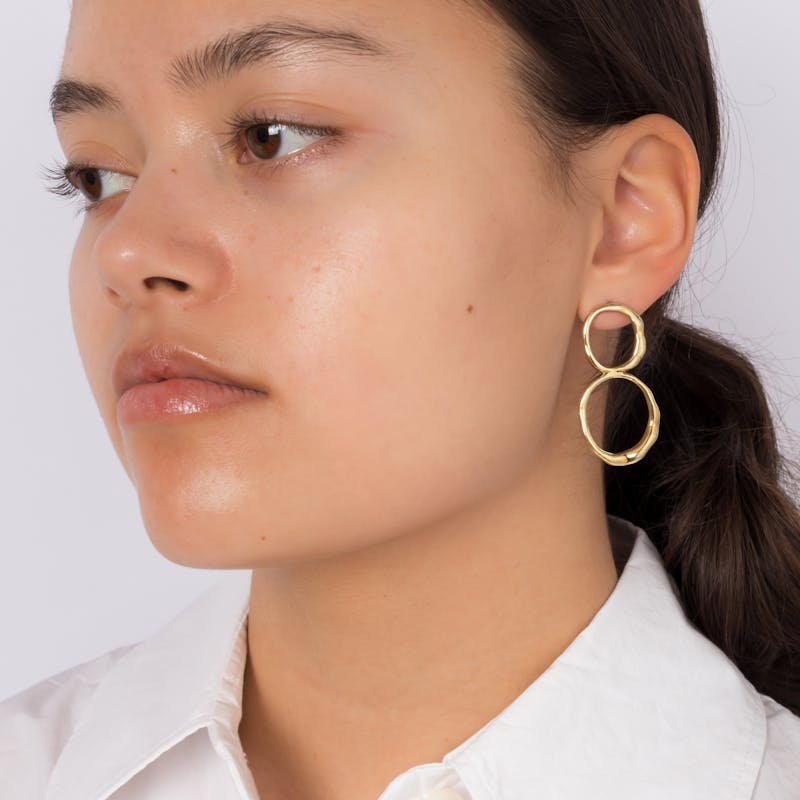Replating, Gold Thickness and Microns

Replating jewellery is a fairly simple process that will make your jewellery look like new.
To understand what plating (and replating) is, what you should consider and the difference between different kinds of gold plating, read on.
What is gold plating?
Gold plating is simply adding a thin layer of gold over a base metal – copper, brass, silver…
While we are talking about gold plating, it’s worth noting other metals can also be used to plate. Rhodium plating can protect silver jewellery, while white and black gold have been plated with other metals to achieve the desired colour.

How do jewellers plate with gold?
Before anything can be done, your faded jewellery will be cleaned.
Jewellers will then take and place your real jewellery in a chemical solution that contains gold. An electric current is then applied, which attracts the gold to the base metal of your jewellery. The process will leave a thin gold covering behind. This is called electroplating.
Depending on the base metal of your jewellery, it may require an additional step. Copper, for example, will need to be coated in a thin layer of palladium or nickel before it can take gold plating.
Because certain metals are much more difficult to plate than others and won’t always give a high-quality outcome, Finematter only offers its services for real jewellery. We can't plate any pieces made of brass, bronze, or mixed metals, as they won’t always turn out well and the pieces don’t have longevity.
While non-real jewellery can be plated, the results usually do not last very long as the base metal doesn’t “take” gold as well as silver or gold.
What are microns and why do they matter?
A micron is short for micrometre. It is a unit of length, with one micron equalling one-millionth of a metre.
Microns measure the thickness of gold plating:
1 micron: 0.001 of a millimetre
Heavy gold plated: 2.5 microns and up (if on silver, also called vermeil, but more on this later)
For comparison, a human hair is roughly 75 microns in diameter.
For the term “gold-plated” to be used, the layer of gold has to be equal or greater than 0.5 micron. Anything under will not be considered gold-plated, but will typically be called “flash plated”. Note that this is not consistent across countries - in France, for example, gold plating must be at least 3 microns thick to be called "gold plated".
Even the highest quality gold plating only uses an extremely thin layer of gold, but due to the electroplating process, it is still very durable.
While microns measure the thickness of the gold that will cover your jewellery, you may also be asked about karats when choosing what kind of gold plating you want.
Because of the extremely small amount of gold involve in gold plating, this is not about the value of the gold, and should be chosen more so for the preference of gold tonality, i.e. colour.

Which microns to choose?
Here at Finematter, we recommend:
1 micron
Recommended for earrings only. With regular and considerate wear, it will last you 1-2 years.
2 microns (our general recommendation)
Recommended for earrings, bracelets, rings, and necklaces. With regular and considerate wear, it will last you approximately 2-3 years for earrings, 1-3 years for necklaces, and 1-2 years for rings and bracelets.
3 microns
Recommended for rings and bracelets. With regular and considerate wear, it will last you approximately 2-3 years.
The difference between Flash Plated, Gold Plated, Gold Filled and Gold Vermeil
At Finematter, we only deal with real jewellery, so none of our jewellers work with flash plating.
But knowing what all these terms mean, can help you make a more informed decision.
Flash and wash plated jewellery are the same thing: they refer to the thinnest possible layer of gold added onto a base metal. In fact, it’s such a thin layer of gold, usually under 0.175 micron, that it’s not called micron plating. The purpose of flash plating is to add colouring to jewellery for single or very infrequent wear.
Gold plated jewellery is micron plated.
Gold filled jewellery is also covered in a layer of gold. The gold is soldered or welded to a base metal. So the technique is different to gold plating, which is electroplated.
Gold filled jewellery is regulated, with the gold having to be at least 10 karats, and the amount of gold has to make up at least 5% of the weight of the entire piece.
This percentage means it’s hard to know how thick the gold is, because it depends on the size and base metal of the jewellery.
You can’t “refill” a piece of jewellery, so if the fill wears off, it will need to be plated, turning it into a gold plated piece.
Vermeil is gold plated silver. Not only will the plating need to be 2.5 microns, the base metal can only by sterling silver, to be considered vermeil.
Vermeil is a protected term, with industry-regulated requirements: a minimum of 2.5 microns plating of at least 10 karats gold, and a base of sterling silver.

Care and cleaning
Gold plating is a great way to refresh your jewellery and make it look new. Whilst gold plating lasts years, it isn’t forever and with wear, it will fade.
Time and exposure to the elements will eventually make your plating wear away.
However, the thicker the plating – the higher the microns -, the longer it lasts.
To keep your gold plated pieces looking fresh for longer, you need to ensure you're gentle with your jewellery. Avoid rubbing and keep your pieces clean with warm soapy water. You can use a gentle polishing cloth on vermeil.
In general, keep jewellery away from liquids: take it off before showering, swimming, or even doing the dishes.
Keeping your gold plated jewellery in great shape doesn’t require a lot of upkeep. Like all real jewellery, a little bit of care will go a long way in keeping it looking brand new.